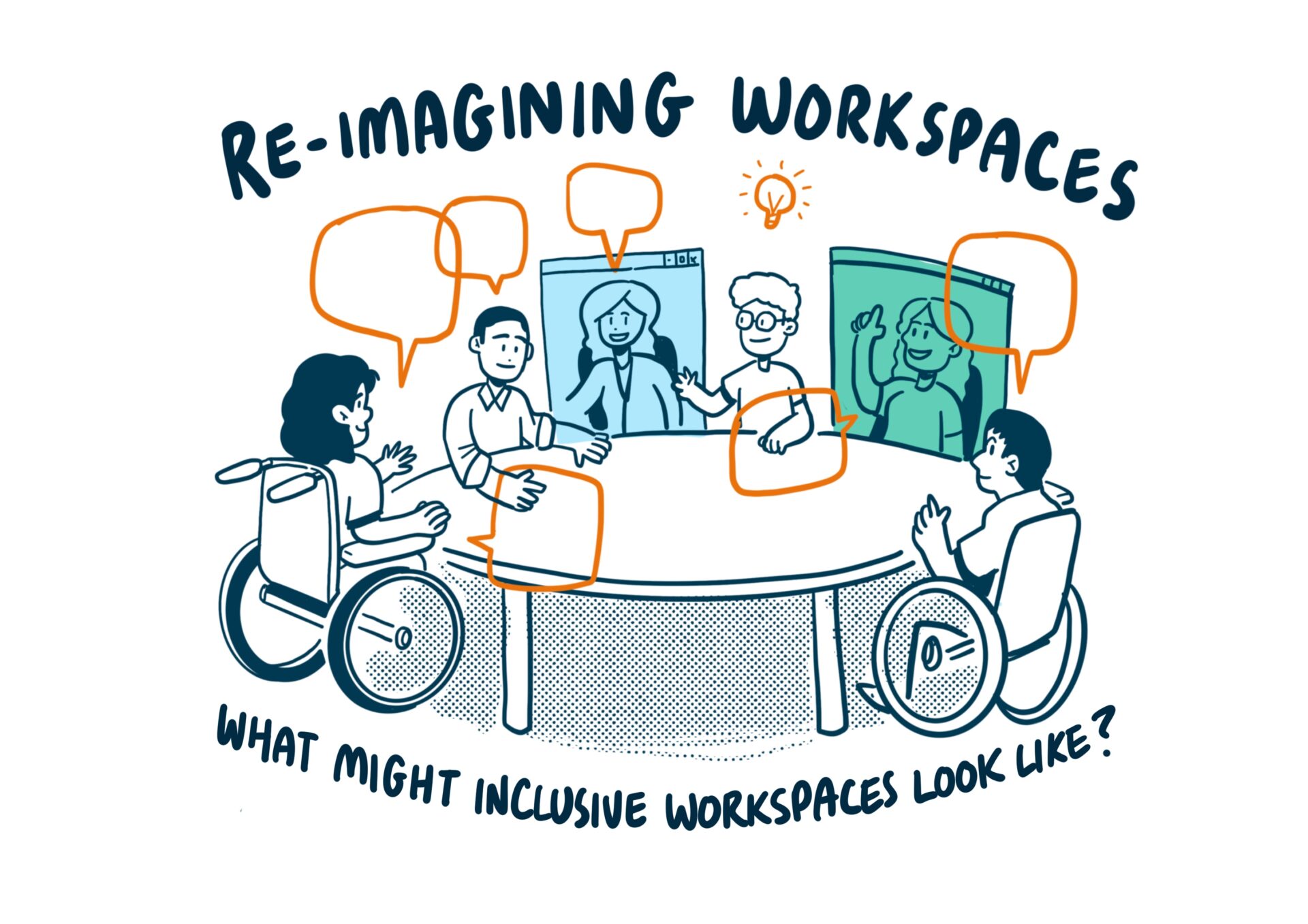Throughout summer 2022, we interviewed 41 disabled workers about their experiences of the pivot to remote working. Below are some details about the pilot, results and emerging themes, and an interim pilot project report.
About the pilot project
In summer 2022, we launched a pilot research project to investigate disabled workers’ experiences of the pivot to remote and online working due to the Covid-19 pandemic lockdowns. While we are based in the UK, and our experiences are of the UK context, we did not limit our call for participants to the UK. We also did not limit sector, role, qualifications, or experience. We wanted to focus specifically on the experiences of those with a physical or energy impairment and made this a focus.
We intended to carry out around 15 interviews, but were quickly booked up and realised that there was huge demand from people with physical and energy impairments wanting to share their experiences with us. So, we extended our booking slots but had to draw a line after 41 interviews. We are grateful to everyone who took part.
Funding
We are grateful to the University of Kent’s Investment in Research Fund for funding this research.
Ethics
Ethical approval was granted by the University of Kent, and each participant was sent information about the research in advance and asked to sign a consent form for us to use the information they shared with us. Our participants’ data was stored safely and fully anonymized. You can read more about the ethics of the research in the Interim Report at the bottom of this page.
Research Questions
We had two main research questions:
- How has the shift to remote working during the first two years of the Covid-19 pandemic impacted disabled people’s experience of employment?
-
Has the pandemic allowed us to discover new best practices for inclusivity and, if so, how can these be embedded as long-lasting workplaces norms?
***
Emerging Themes
Below are seven initial emerging themes from the pilot project interview data. You can read more about these in the Interim Report at the bottom of this page.
1. Positive perceptions of work and working environments
For most of our participants, remote and online working was hugely enabling, meaning that they not only enjoyed their jobs more but performed better. This was correlated with an enhanced feeling of well-being, as well as an increased ability to manage their conditions better.
Many felt that these benefits were difficult to talk about, given the deeply problematic and distressing backdrop of the pandemic.
2. Failures to make reasonable adjustments prior to the Covid-19 pandemic
Only a small subset of participants had managed to secure remote or hybrid working prior to the pandemic, and those who had described themselves as ‘lucky’. This led to frustration that, in the words of one participant, ‘[a]ll the time they said it wasn’t possible was a lie, because as soon as Covid hit it was possible’.
3. Similarities of experiences across impairment groups
Although participants had a vast range of impairments, there were striking similarities of experience across the board. Using Hale et al’s (2020) concept of an ‘energy limiting’ condition, we noted that participants with physical impairments, mental health difficulties, and neurodiversity experienced benefits of remote working. Some of these benefits stemmed from no longer needing to navigate exclusionary built or social enviornments. Consequently, they were able to devote more energy to their work, and then to hobbies in evenings and weekends. The net result was the emergence of a virtuous circle of better condition management and work-life balance.
4. Social contact and remote working
Unlike non-disabled people’s experiences of remote working, many participants found that the shift to remote working increased the amount of social contact they had both in and outside work, findings that meetings and events were suddenly online.
However, some participants noted that the absence of face to face contact was difficult. In particular, those starting new jobs, or trying to get to know new teams found the absence of in-person meetings difficult.
5. Limitations of remote working
While there were many benefits of remote working, building or developing team relations and getting to know colleagues were problematic areas that demanded increased intentionality. Recognising this, some business introduced mandatory ‘anchor days’ where colleagues were expected to attend in person.
6. The role of managers
Direct line managers, as well as human resources managers (HRMs) were key figures in determining both the availability and acceptability of remote or hybrid working patterns. Managers’ attitudes played a significant role in participants’ access to remote working, and their understanding of particular disbailities was key in determining the extent to which remote working was available.
7. New and emerging workplace norms
While the pandemic highlighted vulnerability more generally, participants noted that new workplace norms had begun to emerge that increased inclusion. An example is the widespread use of closed captioning in online meetings which caused d/Deaf participants to note how much workplace interaction they had previously been missing out on. Additionally, an increase in attention paid to vulnerability has seen an increase in requests for reasonable adjustments, both for daily working practices and interviews such as remote interviews and requesting interview questions in advance.
***
